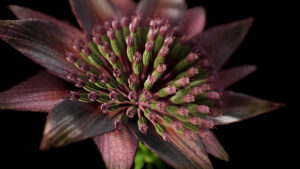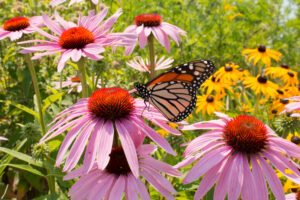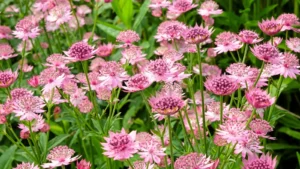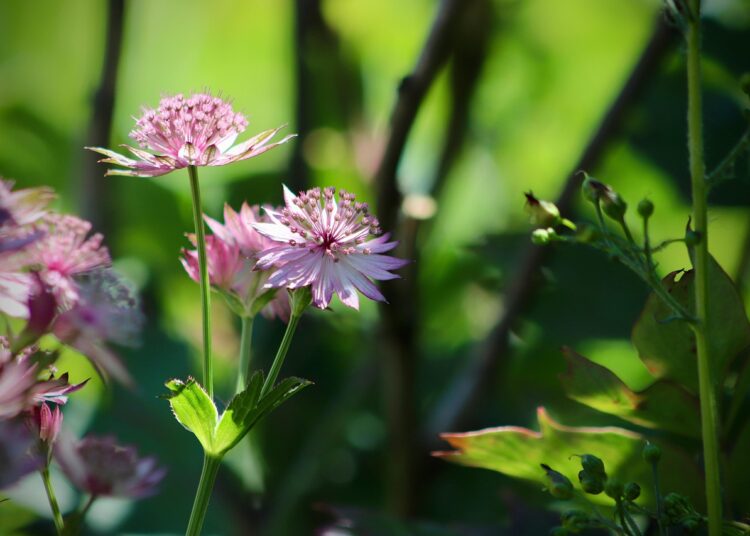If you’re searching for a perennial that adds a touch of elegance and charm to your garden, Astrantia is the perfect choice. Known for its intricate star-like blooms and long flowering season, this stunning plant is a favorite among gardeners and floral designers alike.
With its ability to thrive in partial shade and low-maintenance care requirements, Astrantia is an excellent addition to any garden. Whether you’re looking to create a cottage-style garden, attract pollinators, or enhance your flower arrangements, Astrantia flowers will elevate your outdoor space effortlessly.
In this article, we’ll explore everything you need to know about Astrantia, from its varieties and growing tips to its role in garden aesthetics and floral arrangements.
What is Astrantia?

Botanical Background and Scientific Classification
Astrantia, commonly known as Masterwort, belongs to the Apiaceae family, which also includes parsley and carrots. Its botanical name is Astrantia major, and it originates from woodlands and meadows across Europe and Asia.
Origin and Natural Habitat
Astrantia is naturally found in damp meadows, shaded woodlands, and stream banks. It thrives in cooler climates with well-draining soil and moderate moisture. Due to its adaptability, it has become a favorite in cottage gardens, shaded borders, and wildflower landscapes.
Why Choose Astrantia for Your Garden?
Astrantia is a versatile perennial that offers multiple benefits, making it an excellent choice for both beginner and experienced gardeners. Here’s why:
- Long Blooming Period – Flowers from late spring to early autumn, providing continuous beauty.
- Unique Star-Like Blooms – Adds texture and interest with its intricate, papery bracts.
- Attracts Pollinators – Loved by bees and butterflies, promoting a healthy ecosystem.
- Thrives in Partial Shade – Ideal for gardens with dappled sunlight.
- Low Maintenance – Requires minimal care once established.
If you want a plant that offers beauty, function, and ease of care, Astrantia is a fantastic addition to your garden.
Varieties of Astrantia
Astrantia comes in a range of stunning varieties, each with unique color variations and growth habits. Here are some of the most popular ones:
- Astrantia ‘Ruby Wedding’ – Deep red flowers with dark green foliage.
- Astrantia ‘Roma’ – Soft pink blooms with a delicate appearance.
- Astrantia ‘Snow Star’ – Pure white petals that add brightness to shady spots.
- Astrantia ‘Hadspen Blood’ – Burgundy flowers that create a dramatic effect.
- Astrantia ‘Star of Beauty’ – Pale pink with dark purple centers, striking in mixed borders.
By mixing different Astrantia flowers, you can create a layered, visually appealing garden display.
How to Grow and Care for Astrantia
Soil and Sunlight Requirements
Astrantia thrives in moist, well-draining soil enriched with organic matter. It prefers partial shade, though some varieties can tolerate full sun if kept well-watered.
Watering and Feeding Tips
- Water regularly to keep the soil consistently moist.
- Use mulch to retain moisture and prevent weeds.
- Feed with organic compost or balanced fertilizer in spring to boost blooms.
Pruning and Deadheading
- Deadhead spent flowers to encourage reblooming.
- Cut back foliage in autumn to promote healthy regrowth in spring.
With proper care, Astrantia flowers will reward you with season-long beauty and continuous blooms.
Companion Planting with Astrantia

Astrantia pairs beautifully with other shade-loving perennials to create a balanced and harmonious garden. Some ideal companions include:
- Hostas – Lush foliage that contrasts beautifully with Astrantia’s delicate blooms.
- Ferns – Adds texture and height, creating a woodland feel.
- Japanese Anemones – Late-season blooms that complement Astrantia’s long flowering period.
- Campanulas (Bellflowers) – Blue and purple tones that enhance Astrantia’s elegance.
By combining Astrantia with these plants, you can create a visually stunning and low-maintenance garden.
Common Issues and How to Prevent Them
While Astrantia is generally a hardy and pest-resistant plant, some common issues to watch out for include:
1. Powdery Mildew
- Solution: Improve air circulation and avoid overhead watering.
2. Slugs and Snails
- Solution: Use organic slug repellents or crushed eggshells around the plant.
3. Root Rot (caused by overwatering)
- Solution: Ensure soil has proper drainage and avoid waterlogging.
By following these preventive measures, you can keep your Astrantia flowers healthy and thriving.
Using Astrantia in Floral Arrangements
Astrantia is highly valued in floral design due to its delicate, long-lasting blooms. Here’s why it’s a florist favorite:
- Dried or Fresh Use – Works well in both fresh bouquets and dried arrangements.
- Long Vase Life – Can last up to 10 days in water.
- Perfect for Bouquets – Adds texture and a romantic touch to mixed flower displays.
To make the most of Astrantia in arrangements:
- Cut stems early in the morning for best hydration.
- Remove lower leaves to prevent bacterial growth in vases.
- Use floral preservatives to extend vase life.
Whether in a bridal bouquet or a rustic vase arrangement, Astrantia flowers add charm and elegance to any setting.
Frequently Asked Questions About Astrantia
1. Is Astrantia an annual or perennial?
Astrantia is a perennial, meaning it returns year after year with proper care.
2. Can Astrantia grow in full sun?

Yes, but it prefers partial shade. If planted in full sun, ensure consistent moisture.
3. When does Astrantia bloom?
Astrantia blooms from late spring to early autumn, offering months of floral beauty.
4. Is Astrantia invasive?
No, but it does self-seed readily. To prevent unwanted spread, deadhead flowers after blooming.
5. Can Astrantia be grown in containers?
Yes! Choose a large pot with good drainage, and keep the soil consistently moist.
Conclusion
Astrantia is a must-have perennial that brings grace, elegance, and low-maintenance beauty to any garden. With its intricate blooms, long flowering season, and versatility in both landscaping and floral design, it’s easy to see why Astrantia flowers are a favorite among gardeners.
If you’re looking to add a charming and unique plant to your garden, Astrantia is the perfect choice. Start growing this stunning perennial today and enjoy its timeless beauty year after year.
🌿 For more gardening tips and expert advice, visit GardenLoom! 🌿










